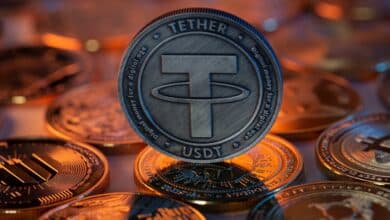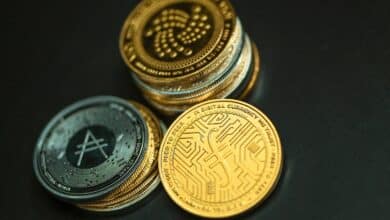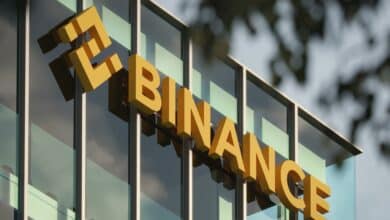veTokenomics Guide – What Should You Know About This Model?

According to the veTokenomics model, in order to control the governance of the protocol, the tokens are locked up by the users and turned into veTokens. The tokenomics analysis is used to manage the schedules and distributions of token burns, the supply of tokens, allocating the tokens to a number of stake holders and all other dimensions of managing and producing a token.
In the determination of the potential value of the decentralized finance (DeFi) projects, tokenomics play a greater role. The tokenomics phenomenon has a direct impact on every cryptocurrency or the nonfungible token (NFT) available. This is because the phenomenon of supply and demand in the crypto market remains constant irrespective of any change in the financial ecosystem.
Here is a detailed guide article that will help the readers to understand the concept and working of veTokenomics and all the possible pros and cons related to it.
What is a Token?
A token is a frequently used term in the crypto domain. In the blockchain network, the term token is referred to describe the crypto assets that do not exist in real as their own but created over the blockchain. It can be understood by an example that when a transaction is carried out on ether (ETH) that is an underlying asset on the blockchain, it is not considered as a token. But when one trades GURU that is built over the blockchain, on the Ethereum network it is considered as a token.
Uses of a Token
In the Decentralized financial space network, the tokens have a wide range of uses. They are used for multiple purposes that are described as below.
- Ownership
They are used to provide the access to a person or to grant any one an ownership of a particular asset. This has a wide application in the DAO voting case, where the voting power of a person depends on the number of tokens one holds. The more the number of tokens with the person, the more voting power he gets and vice versa.
- DeFi Tokens
In order to exchange the value that is created by the DeFi projects, the tokens can be used internally or externally. The tokens that are issued by these tokens are not only capable of performing various functions rather one can also hold or trade them like any other cryptocurrency used generally.
- Benefits Distribution
In the upside of a protocol, they provide a key mechanism to the owners to allow them to have a share in the currency. Therefore, one can consider the tokens that focus on the equal distribution of an increased value of an asset.
- Utility
There are some specified applications for the tokens in the decentralized finance space. This can be understood as if any game that is introduced in the crypto space that would only allow the people holding the token to play that game.
What is Tokenomics?
In a decentralized financial (DeFi) space, the tokenomics is actually considered as the analysis of all the aspects and dimensions of a token. These aspects and dimensions may include the allocation, supply, distribution, management and creation of a token. As any market operates on the universal law of demand and supply, therefore, the effect of tokenomics can be seen on every other entity present in the market such as NFTs, other cryptocurrencies and DAO.
Importance of Tokenomics while Investing in Crypto
The experts and professionals are of the view that the market runs on the law of demand and supply solely. Applying it on the crypto assets, one has to consider the importance of this law for the developers and the consumers both. There are a lot of factors that should be considered before looking upon the tokenomics. The proper use of the cryptocurrency is the most important one.
Tokenomics also finds an important usage to find out the accurate worth of any cryptocurrency in the future. However, every token is made up of the four fundamental tokenomics pillars. These pillars are supply, distribution, monetary policy and value capture. If anyone finds any flaw or problem in these pillars, it is a hint about any significant issue in the system.
A supply of a token in the market means that the price of that token has fallen in the market. The percentage of the total supply of the token that is held by every wallet is referred as distribution. To determine if any token under consideration is inflationary or deflationary, the monetary policy is used. It also determines the rate of inflation or deflation. A certain protocol captures a value, and that value is then distributed further, this mechanism is monitored by value capture phenomenon in tokenomics.
What is veTokenomics?
There were major flaws in the design that was created for the tokenomics. The allocation of supply in a considerable amount to the insiders can result in creating a pump and dump situation in the market. There is no proper system of distribution designed by the developers that may explain that how to distribute the tokens among the protocol designers, community, investors, treasury or even the founders.
The lack of a proper plan for the distribution of the tokens in the decentralized financial (DeFi) protocols such as Uniswap, MarkerDAO or Curve causes the sub—optimal distribution of the tokens. The reason is as the best possible allocation may not always be occupied by the participants with greater contribution. To tackle the situation in a better manner, vote-escrowed tokenomics or veTokenomics was introduced by the Curve protocol.
VeTokenomics is the concept in cryptocurrency that facilitates and encourages the users for long term participation. For this purpose, for a defined period of time, the tokens are frozen. This decreases the supply of the tokens in the market. The users then receive the veTokens as a compensation as a result. These veTokens can neither be transferred nor be sold in the market.
Therefore, in order to get the participation in the process of governance, the tokens need to be locked for a given period of time. This will result in increasing the organic price of the token in the market during that specified time period as the supply of token decreases. In order to receive a part of the revenue from the protocol, the user can also use the Decentralized financial (DeFi) initiative to lock the tokens that he owns.
On the other hand, the infrastructure of the veTokens is a little different from the traditional ones. The people possessing the tokens that are locked can increase the liquidity of any pool by controlling the flow of emission in the market. Emission is the term referred to the rate of creation and releasing of the cryptocurrencies in the market.
The emission rate in the market is directly affected by the economic model of cryptocurrency being applied. The economic model may be inflationary or deflationary depending on the requirement in the financial market. As a result of it, the token holders can better align the success of the protocol and the incentives that are earned with each other. The reason is as in such situation, the token prices cannot be manipulated by the whales by using their votes.
Working of veTokenomics
The implementation of veTokenomics is important to be considered first in order to understand the working procedure of the vote deposit tokenomics. As a reward of offering the liquidity to pools of the Curve, the liquidity providers (LPs) get to earn the LP tokens same as the other decentralized financial (DeFi) protocol.
The Curve DAO token (CRV) can be fetched by the deposition of the LP tokens into the Curve gauge. Locking the CRV can help the providers to increase the liquidity rate. The contribution of liquidity of each user is calculated by using the liquidity gauge. By using a unique liquidity gauge in the Curve pool, the tokens of the liquidity provider can be staked.
In addition to that, the fee that is generated by Curve Finance is shared by the veCRV holders and LPs. The CRV governance tokens should be locked for a specified period of time that may vary between one week to four years depending on the user’s choice. In order to obtain veCRV, the user has to give up on the liquidity of the token for that specific time period. This can be portrayed from such situations that the stakers do not aim at earning the gains on short term tenure.
Instead, they believe in long term investment and earning larger profits in order to make the project succeed. If the tokens are locked for a longer period of time, the stake rewards can be increased by the veCRV holders. The holders decide that the liquidity emissions will be received by which of the available liquidity pools. As a result, they get to win the rewards as they secure the liquidity on Curve using swaps.
The influence that the token holders get to have in the voting process is decided and influenced by how much lengthy is the period of time for which they lock their veTokens. To understand this concept in a better manner, consider an example of two people Jack and Harry who possess equal amount of CRV. Jack chose a time period of two years to lock his tokens and Harry decided to keep the tokens locked for one year only.
This resulted in rewarding double voting power, veCRV and the yields associated with the tokens for Jack than the benefits gained by Harry as the time period for which Jack locked his tokens was double than that of Harry. Such systematics of rewards, encourage the users to engage in long term investments in the decentralized autonomous organization (DAO). Moreover, it also makes sure the democratic distribution of the tokens for the users.
Balancer is one of the commonly known examples of veTokenomics. With the maximum locking up time period of about one year, Balancer introduced the vBAL tokens in March 2022. Another example is Frax Finance that allows its users to use the vFXS tokens. Using these tokens, the users can get to choose the gauges. The FXS emissions will be distributed among different pools available on the decentralized exchanges (DEXs) using these gauges.
What are the Advantages of veTokenomics?
Therefore, the price of the tokens cannot be manipulated by the token holders who own a considerable number of tokens.
- Inhibiting CRV Circulation
The basics of veTokenomics can be understood by understanding the concept that if the supply of the veTokens is blocked by the token holders, they get rewarded for that. The blockage created in the supply decreases the selling pressure in the market and also cause a decrease in the supply of LP tokens. This is one of the major benefit of using the veTokenomics.
- Positive Impact on Supply Dynamics
Except that of exercising the governance rights and speculating, there was no other market that was available for the tokens of the liquidity providers. The price was nearly not at all affected by the DeFi governance tokens that were used initially. However, the supply dynamics will be positively affected by the veTokens that are locked.
- Encourages Addition of More Liquidity to the Pool
The popularly known tokenomics model also supports the addition of liquidity to the pools. This results in the increase in the strength of ability of the stablecoin. This dynamics result in the increased participation of Abracadabra, Yearn Finance and Convex Finance and multiple other projects in the curve wars. This also ultimately increases the buying pressure on CRV.
- Valuable Rights of Government
As the ratio of supply of CRV that is been locked grows with time, an increase in the valuable governance rights, cash flows, discounts, yields and alignment in the priorities set by the stakeholders such as traders, LP and token holders is also being expected by the community.
What are the Disadvantages of veTokenomics?
Although there are a number of benefits of using veTokenomics, there exist certain limitations that the stakeholders should be aware of. Some of the cons of veTokenomics are mentioned below.
- Requires a Long Period of Time
Using the model of veTokenomics, for investment and locking the tokens, it requires a long period of time. Therefore, the investors who believe in short term trading plans may not be attracted towards this model.
For example, to be benefited completely, one need to lock the tokens for about four years. This demands a high opportunity cost for locking the tokens for up to four years and in case he changes his mind during that period of time, it is of no use as the he cannot access them before the initially decided period of time.
- Long term Oriented Incentives Could be Damaged
The model of veTokenomics, decreases the long-term oriented incentives. If the protocol that offers such tokens has majority of veTokens, this also results in the weakening of the decentralization of governance. Fore example, a large of veCRV are owned by the Convex. If the votes are sold or bribed on a larger scale, it may result in damaging the long-term incentives of its model.
- Target Audience of Potential Investors Can Be Reduced
The target audience of potential investors can also be reduced as every investor does not agree to give up on the liquidity offers in exchange with the benefits they can get using the token.
What is the Future of veTokenomics Model?
Curve Finance considers the governance tokens using which the power is only transferred to the votes invaluable in the traditional tokenomics model. In addition to that, it also thinks that if governance is the only reason that is the only factor that is driven by demand, one needs some extra reason so that he gets fully committed to any project. To this, the new model introduced in the crypto domain called as veTokenomics is creates new advancements.
Although the veTokenomics model has a number of benefits for the stakeholders such as it coordinates the incentives of the investors using this protocol, provides a compensation to the long-term investors and lowers the supply of a token still the experts consider the model as an immature one and explain that is requires much upgradation.
In addition to use of the veTokens as a middleware base, the development of novel ways in order to construct distinct economic systems, veTokenomics may be incorporated to design the infrastructure of many protocols created in the future. However, at present one cannot predict anything before time so it is difficult to predict beforehand that how will the tokenomics model evolve in the future.
Conclusion
The tokenomics model has a number of pros and cons attached to it. However, the implementation of this model in the right way and its better features than the previous models is providing benefit to a number of developers all around the globe. But the experts and the professionals are of the view that this model is still immature and need a number of advancements and upgradations so that the developers could get the benefit in true essence out of their initial investments.
Tokenhell produces content exposure for over 5,000 crypto companies and you can be one of them too! Contact at info@tokenhell.com if you have any questions. Cryptocurrencies are highly volatile, conduct your own research before making any investment decisions. Some of the posts on this website are guest posts or paid posts that are not written by Tokenhell authors (namely Crypto Cable , Sponsored Articles and Press Release content) and the views expressed in these types of posts do not reflect the views of this website. Tokenhell is not responsible for the content, accuracy, quality, advertising, products or any other content or banners (ad space) posted on the site. Read full terms and conditions / disclaimer.







